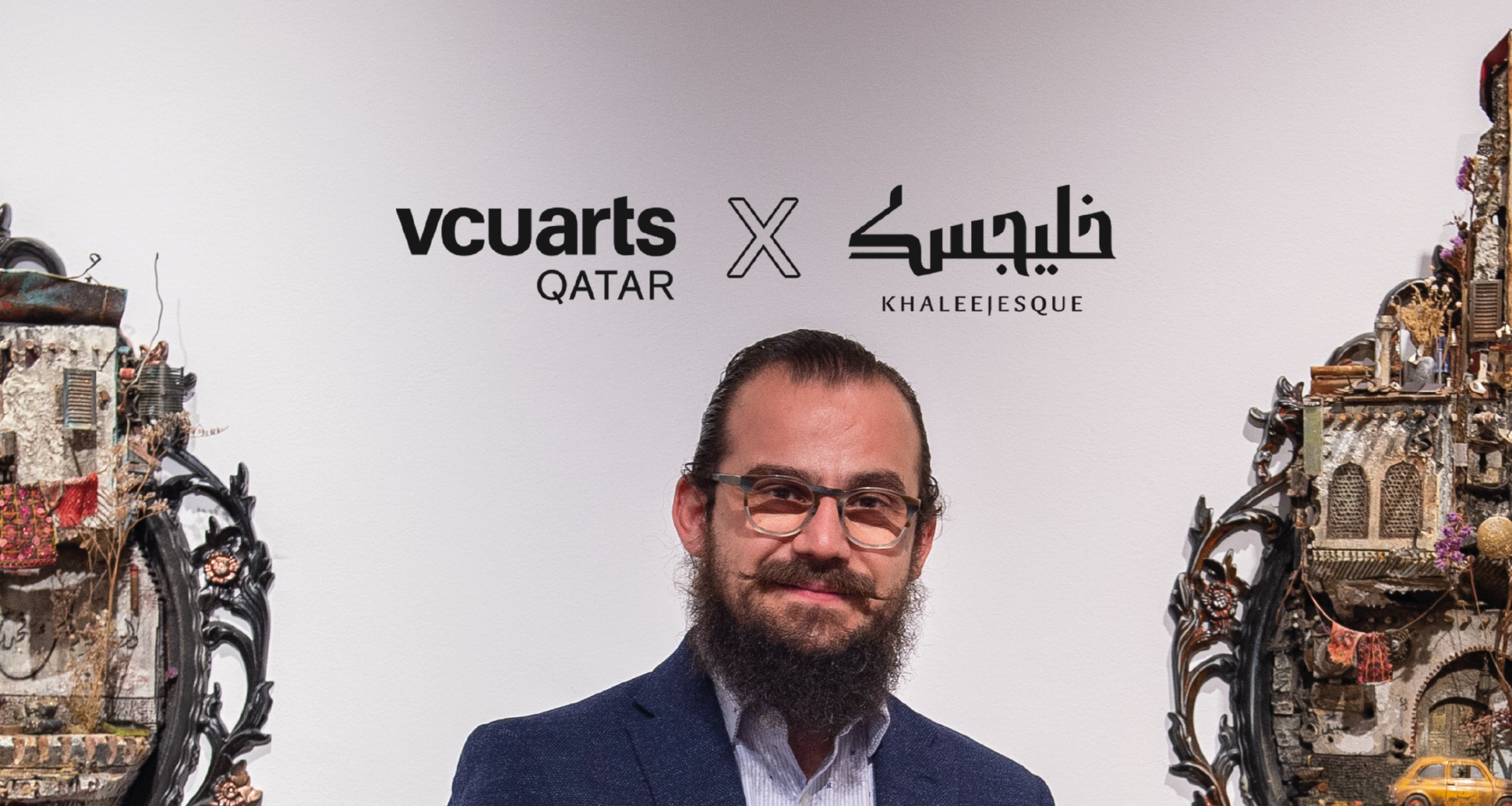Mohamad Hafez’s miniature artworks are breathtaking for their detail, and poignancy.
As one walks into the exhibition space, one sees the obvious – each artwork is a labor of love. But linger on, and you’ll soon find yourself walking on a tightrope of emotions, precariously balanced between hope, and helplessness, held together on either end by Hafez’s pining for home, and the solitude he experienced across multiple phases of his life in the US.
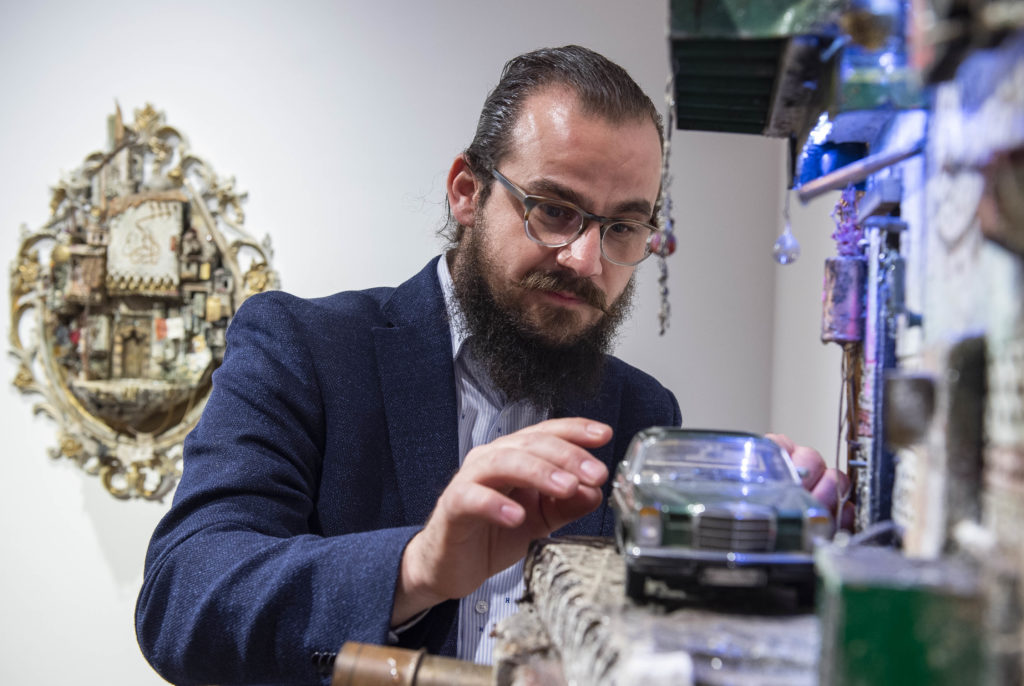
The Syrian-American was recently in Doha, Qatar, at the invitation of The Gallery at VCUarts Qatar, in Qatar Foundation’s Education City, for his exhibition ‘What is home to you?’. There, after a morning of receiving visitors, posing for photos, and sharing his thoughts, Hafez sat down for a chat.
This story isn’t solely about his artwork. Instead, it’s a glimpse into a mind that instead of being swept away in a whirlwind of emotions, mastered, and then mustered, his pain and frustration into dozens of intricate artworks that would ultimately inspire an Oscar-nominated documentary titled ‘A Broken House’, by The New Yorker.
Hafez starts by saying that for him, solitude – its dichotomy of providing both peace and pain – is inspiring. And, it’s something he got accustomed to when he was a child.
“Growing up in a housing compound in Al-Kharj, just outside Riyadh, my siblings and I used to make these long commutes to school, an hour and a half each way. Those trips – quiet and uneventful – inadvertently taught me to be comfortable with silence. I would sit by myself, each day, every day, nose pressed to the window, contrasting the seemingly still mountains in the distance, with the beige landscape speeding by. This gave me ample room to be visual with my thoughts. I’d construct long stories and detailed images in my head.
“Little did I know it then, but I was experiencing the kind of creativity that emanated from a still, relaxed mind. By modern standards, I guess I was reaping the benefits of being in the moment – without realizing it, of course. Years later, as an adult, amidst a different kind of solitude – one born of loneliness – I’d be able to draw on the same inward-reaching visualization to create these pieces.”
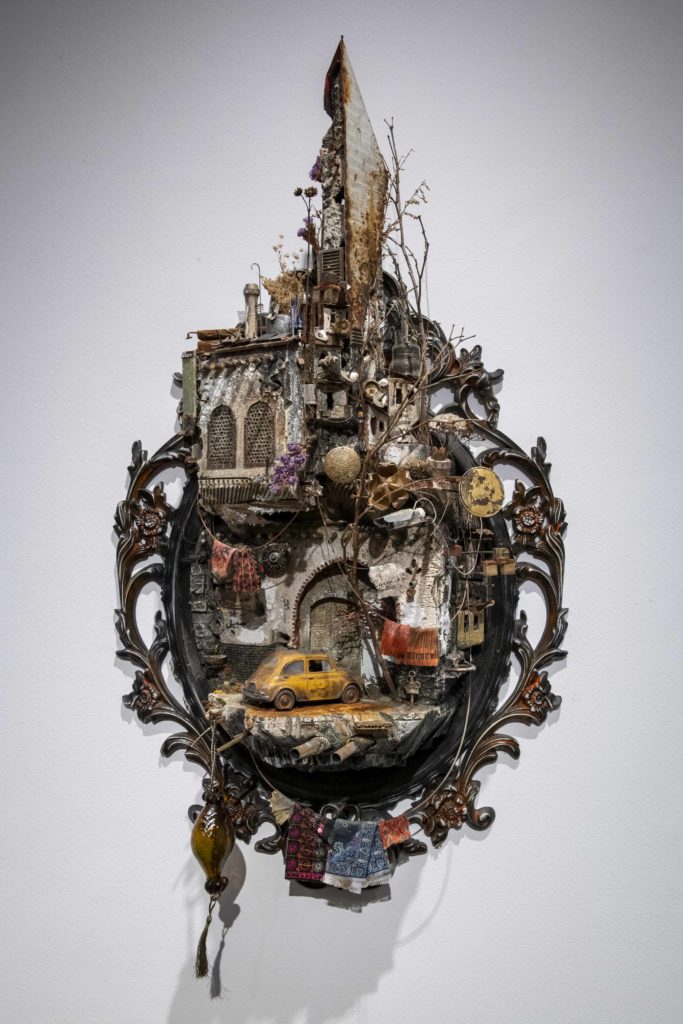
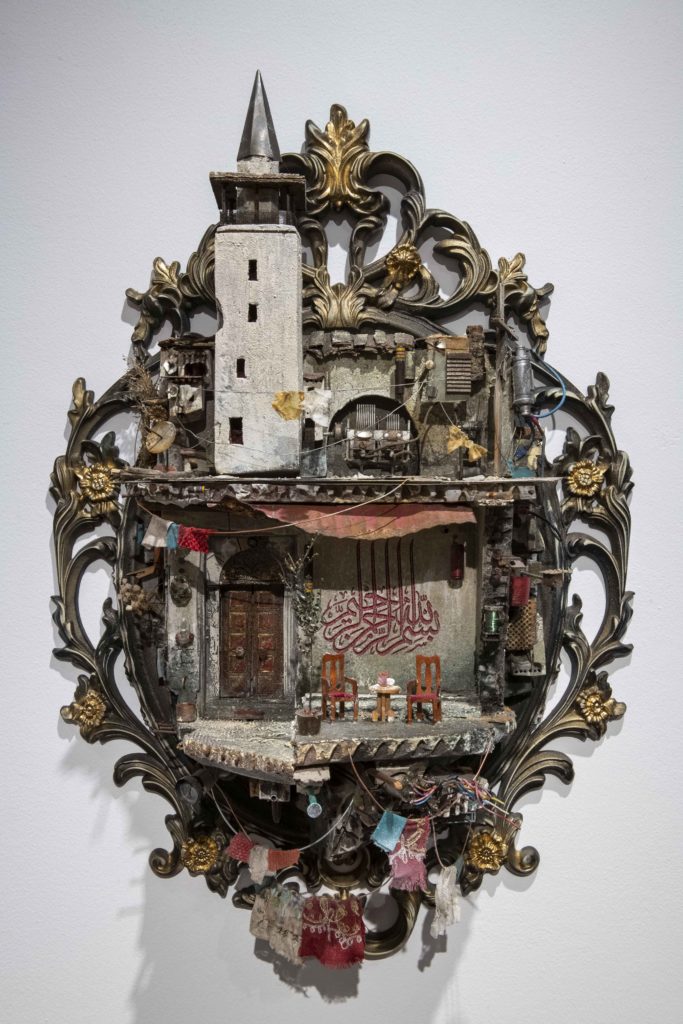
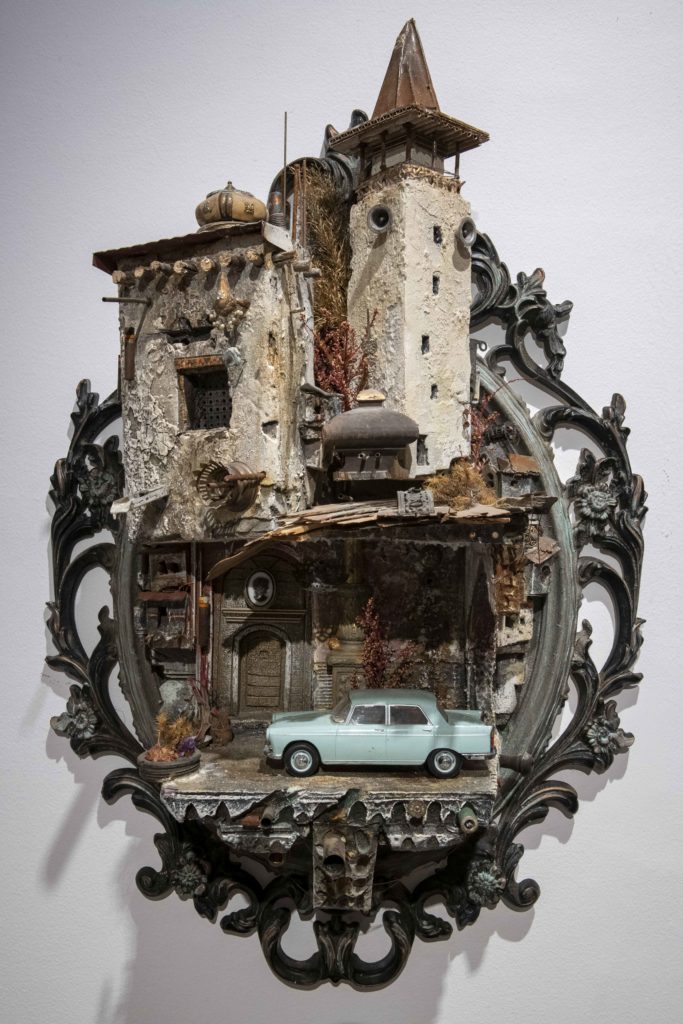
Indeed, first as a student and then as a professional architect in the US, solitude was his soul-mate: the spiraling homesickness that engulfed him when he couldn’t visit Syria and return to the US, as he had been granted only single-entry visas, first to study, and then for work; the sense of desperation that choked him into silence as he watched his country being ravaged by war; and the loneliness he experienced as he consciously chose not to live life in the fast lane.
As he talks, his voice sheds the cheery, upbeat tone he used as he joked with visitors prior to this conversation. Instead, it becomes steady; soft and slow. There are moments when it is hard to fathom if he is answering a query, or lost in self-reflection.
“Silence and time – or time in silence, if you will – allows you to sift through your thoughts; after the initial knee-jerk response to a situation, it allows you to recognize why you’re mentally responding to events around you, in a certain way. Time gives your thoughts the space to percolate and then settle.”
“My artwork is a result of that. You see that in the detail. There isn’t a single miniature that is placed there by chance. Each one is a choice and it represents something that is home to me, and to the countless who have lost theirs’.”
Hafez gestures to his artwork hanging on the walls of The Gallery, saying, “This wouldn’t be here if I had tried to ignore my pain or loneliness, or blot them out with other distractions. Instead, I let them simmer, boil and then settle. And that’s when I accepted my situation and decided to do something about it. For me, that meant channeling my emotions into creativity.
But it’s a process. And that process needs time. You can’t rush it.”
Hafez didn’t rush it; in fact, in his case, it took close to a dozen years.

“People stare at my artwork and go ‘Aah’. What would the same people say if they knew that I didn’t exhibit my work for 12 years? I started out when I was studying and continued creating while holding a day job with a local architectural firm. 12 years is unthinkable in a world where two hours is too long. For most, it’s an epoch. The stark truth is that you can’t create if you swipe through life; you need to stop and savor it. And this unfortunately is what is happening around us.
“When I look around and then think back, I realize that what was for me a pretty normal childhood, is now unique, because today the minds of kids and adults alike are expected to move, move, move all the time, even when outwardly, we may be sitting still for a few minutes. Speed and self are at the center of this culture; now it’s all about me, me, me and more of me. It’s about who can be the best, first. This is also why you see so many disheartened creatives now. They want their very first creations to be gallery-worthy. It’s a matter of being patient with regards to understanding your thoughts.”
Hafez says it was his ability to dig deep down into his inner thoughts, untangle them, and lay them out strand by strand, that helped him identify, and eventually fulfill, his desire to be both an artist and architect.
After graduation, he followed the prescribed path. He joined a reputed architecture firm in the US. Surrounded by top-rate designers and high-profile projects, the new graduate could practice the skills that he’d painstakingly acquired at an incredible personal cost. The 12-hour work-days kept him on his toes. It also made him crave home even more.
“Neither neon nor noise can conceal loneliness. With each year, my thoughts were brighter and louder than anything in the room, or on the streets. In my spare time, I started stepping out of my comfort zone, into humanitarian work. In the US, and when I eventually made it back to the Middle East to meet my family, I met people whose lives had been decimated by violence: parents who had to bury their kids, kids who had to bury both their parents. This sharpened my self-reflection, and perspective, further. I realized I’m more than a professional or a paycheck. I developed a moral scale – a compass – to guide me.”
“I’m more than a professional or a paycheck. I developed a moral scale to guide me.”
It’s a moral compass that helped Hafez stand his ground in the face of criticism from well-meaning skeptics who didn’t realize that there was no stopping the torrent of creativity that seemed to have burst forth from a mind, and heart, that was at once swollen, and singing, with pain.
“Then, and even today, for a lot of professional architects, what I've done is complete career suicide. I can’t blame them. The opportunities that I had at my disposal at such a young age – a supporting boss, a reputed company – are seldom found in architecture careers. To them, I was approaching the pinnacle of my career, when I decided to quit. So, to see me step away to focus on my art, and private practice, they were like, ‘What is going on with your brain?’.

“Yes, there were moments of self-doubt and moments when I was scared. Because the more you waited, the more the bills, the mortgages, the responsibilities would pile up. But I realized only my artwork could bring me a little solace; when I was creating, I felt I was praying. Now, looking back, I feel where I am now is the result of a combination: of blessings from God who sends you the right people at the right time, but also the perseverance to hold on, in silence.”
Hafez smiles, and almost as an afterthought, adds, “There’s a bit of contradiction here. At exhibitions, visitors see a confident artist and architect who jokes, and cheerfully takes questions. What they don’t understand is that it’s not a confidence born of success. It’s a confidence born out of the silence of my thoughts.
“Believe it or not, I’m a person who can happily drive a car for 20 hours, alone, with my thoughts for company.”
“There’s truth in the saying, “If words are silver, silence is golden.”
Words by Mary Joseph
This series is part of an editorial partnership brought to you by VCUarts Qatar and Khaleejesque

